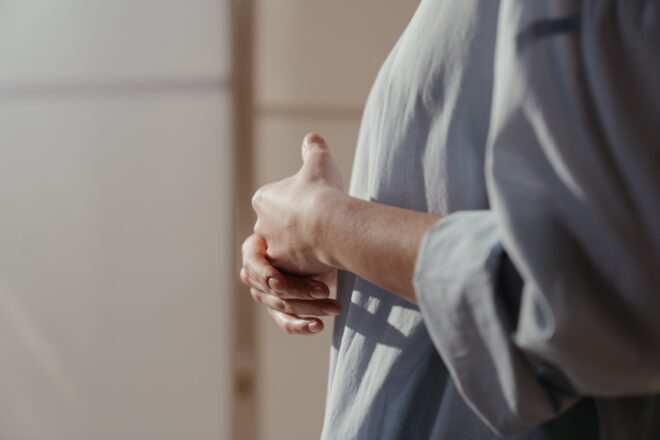
Clinic News
We have had many patients asking if we will be closing again as we start a second national lockdown - the answer is no, so please don't panic. Back in March 2020, chiropractors were defined as essential health care workers through legislation passed in Parliament. Remaining open will hopefully take some pressure off our much loved NHS. We have reviewed our safety measures and with just a few in house alterations we will continue to operate in just the same way. However, if YOU feel you wish to shield or wait until the country opens up again, be assured that we can still help you with our online video consultations offering advice and support, or by telephone or email. Just give reception a call to book to the best mode for you.
This month we will be looking at ways to continue to support you through this second way in as many ways we can having witnessed the affect the first lockdown had on you physically and mentally. So, read on and find out how you can help yourself with some great articles.
Alex gets to link up with Alan Clifford again on Friday 27th November from 11:15am at BBC Radio Nottingham, if you didn't catch her last chat listen to the podcasts here: http://www.beestonchiropractic.co.uk/podcasts/

The Art of Mindfulness
Whether you have an important work deadline to meet, a dentist appointment to book, or simply remember to pick up milk on the way home, we are all guilty of succumbing to the pressures of a never ending to do list.
Multi-tasking and always switched on?
With our fast paced and demanding lifestyles, we tend to put the majority of our thoughts to the back of our mind. However, when we are not able to recognise the relevance or influence of individual thoughts they can filter into the physical body as muscle tension or inflammation, which is why mindfulness could help relax your mind and body.
What is mindfulness?
Mindfulness is the practice of becoming aware of yourself in the present moment, enabling you to identify how you feel inside and out. With this mind-body approach, you can clear your mind of negativity and unnecessary strains and ultimately, help against physical aches and pains.
Why is it beneficial?
Mindfulness allows you to understand your pain and teaches you how to let go of any anxiety associated with it, as these thoughts can contribute to increased tension, forming a vicious cycle of increasing pain.
As well as stress and chronic pain, mindfulness can help combat anxiety, sleep and eating disorders. Mindfulness increases positivity and energy levels which encourage healthier life decisions, improving your overall sense of wellbeing. So not only are you likely to make better food choices but you should be able to finally relax when it comes to getting a good nights sleep too.
How to practice mindfulness?
Simply take 10 minutes out of your day to practice mindfulness, by working on five basic tips.
- Sit comfortably and relax
- Focus on your breath
- From your head to toes, bring awareness to each body part
- Identify any sounds or smells and let them pass
- Acknowledge and accept how you feel emotionally

Eat to Beat Pain
You’re probably aware of the primary factors that can cause or worsen pain. These can include poor posture, injury, too little (or too much) activity, and specific conditions such as arthritis.
But did you know that what you eat can also help to manage or relieve pain, or even prevent it occurring in the first place?
Here are some of our top nutrition tips for managing pain.
- Ditch the processed foods
Processed foods generally refers to most things that come in a packet with a list of ingredients: from biscuits to ready meals to breakfast cereals. They often contain little in the way of naturally occurring vitamins and minerals. They may worsen inflammation and pain because they contain higher levels of unhealthy fats – in particular, processed omega-6 fats and ‘trans’ fats, which have pro-inflammatory properties. They often contain quickly absorbed sugars or refined carbohydrates too, which may exacerbate inflammation when consumed in excess.
In contrast, ‘real’ foods are as close as possible to how they are found in nature. They can include whole vegetables and fruit, nuts and seeds, whole grains, fish, eggs and meat (whole cuts, not ‘deli’ or processed meats). These foods naturally contain higher levels of nutrients that can help reduce inflammation and pain, such as those we’re going to look at in more detail below.
- Eat magnesium-rich foods
One of the nutrients that may help to manage pain and inflammation is magnesium. Magnesium helps our muscles to work normally, including helping them to relax, which in turn helps to avoid or relieve muscle tension that can contribute to pain. This mineral is also important for the nerves.
Magnesium is found primarily in whole unprocessed plant foods – especially green leafy vegetables such as spinach and kale, seeds and nuts, and whole grains including rye and buckwheat.
- Include oily fish
Oily fish such as mackerel, salmon, sardines, herring and anchovies are high in omega-3 fats. These fats have anti-inflammatory properties and therefore may help to manage pain. The specific omega-3s in fish (EPA and DHA) can be more beneficial than the types of omega-3 found in seeds such as flax seeds.
Aim to eat a serving of oily fish around three times a week. These can include tinned sardines and salmon as long as they do not contain added vegetable oils (olive oil is fine). Note that ‘omega-3 fish fingers’ are not a good source of omega-3 fats – stick to the real thing!
- Get plenty of vitamin C
You may know vitamin C for its role in the immune system. But in fact the primary role of vitamin C is in making collagen – a protein that forms the basic structure of most of the body’s tissues, including the bones, joints and muscles. If your body can’t make collagen properly, these tissues will lose strength and function, contributing to not only day-to-day pain but also potentially painful conditions such as arthritis and osteoporosis.
Eating a variety of vegetables and fruit is the best way to get enough vitamin C. Although ‘five-a-day’ is the well-known recommendation, we should be aiming for at least seven portions a day, primarily of vegetables, in order to get good amounts of vitamin C and antioxidants. Some of the best sources of vitamin C include peppers, kale, broccoli, kiwi fruits, Brussels sprouts, watercress and red cabbage. If you can, get your veg and fruit from a local producer (e.g. a farmer’s market) as it can lose its vitamin C when it’s stored or transported for long periods of time.
- Include anti-inflammatory spices
The spices ginger and turmeric in particular can have anti-inflammatory and pain-relieving properties. Use fresh ginger and powdered turmeric in your cooking whenever you can, make fresh ginger tea with a grated thumb-sized piece of ginger. If you have a good vegetable juicer you can even make fresh ginger juice to sip on – but watch out, it’s strong!
- Try avoiding nightshades
The ‘nightshade’ or solanaceae vegetables may worsen inflammation and pain for some people. These are aubergines, tomatoes, potatoes (not sweet potatoes), and peppers – including chillis and all types of chilli powder (cayenne, paprika etc.). If you’ve implemented the other changes for at least three months and not noticed a significant improvement in your pain, then try eliminating the nightshade vegetables.
- Consider eliminating gluten
Gluten is a protein that’s found primarily in wheat, barley and rye. The most severe reaction to gluten is coeliac disease, where the sufferer has to avoid gluten for the rest of their life. But some people who do not have coeliac disease may also react to gluten in a less severe way, which can contribute to inflammation in the body. If you’re cutting out gluten it can be best to work with a nutrition practitioner (e.g. a nutritional therapist) for support to make sure you’re not missing out on any nutrients.

Joints Cracking
We’ve all heard our parents say “Don’t crack your knuckles, it’s bad for you”, but is it? The ‘popping’ sound is called crepitus and it happens when air bubbles are released from the joint spaces. It is extremely common for our joints to crack, especially as we grow older, so typically it’s not something to worry about.
As we age, our joints tend to make more noise because our cartilage wears down making the surface rougher when these rub against each other. The way you sleep, walk, move, and do daily activities has an effect on how often your joints crack but everyone will experience this at some point in their life.
The myth that cracking your knuckles causes arthritis is completely erroneous. There is no scientific study that proves that there is a relationship between these two. However, according to the US Anatomy and Physiology Instructors’ Cooperative, which examined 300 knuckle crackers, while no direct connection was made between joint cracking and arthritis, those who habitually did cracked their knuckles, showed soft tissue damage and loss of grip strength.
There are cases where this sound can indicate more, but only if accompanied by swelling and pain. As long as it’s not painful, joint noise is okay. If the cracking comes with swelling or pain, then it’s the time to see a chiropractor or a doctor.
In some cases, people like to crack their back and neck but there is a right way to do this and a wrong way to do this. If you crack these too forcefully or too often, it can be very harmful to your health because you can pinch the nerves in these areas making it an extremely painful experience. In some cases, the pain can make it impossible for you to move.
In order to prevent any long-term damage, it’s advisable to visit a local chiropractor to help stabilise the joint which will stop you feeling the need to do the cracking yourself.

Posture Fixes
Have you ever been told to “stand straight”, maybe by your parents or teachers? They weren’t wrong to tell you that having good posture is important. The technical term for having bad posture is postural imbalance, and there are various reasons why you might be suffering from it. Some of the most common causes include; improper standing or sleeping, stress, slouching while sitting and bending your neck forwards while using your phone.
Although it might be something that you don’t realise at first, poor posture really can harm your overall health, especially in the long run. When we have poor posture, we add tension and compression to structures that weren’t meant to bear that weight. These stresses and strains build up over time and can wear down our bones, joints, and ligaments, even changing the way our muscles work.
If you are suffering from postural imbalance or simply want to prevent it, follow those exercises and tips that can help alleviate muscle tension and as a result, help to fix posture mistakes:
- Sit correctly. Your muscles are may not be conditioned to support you in the right position as they are used to supporting you in the wrong position, so it might feel uncomfortable at first, but you can also do exercises like bridges, back extensions and planks that will strengthen your core.
- When standing, keep your body in perfect alignment with your neck straight and shoulders parallel with the hips. This is a great fix if your bottom tends to stick out or have what some call the “Donald Duck posture”. Some exercises that can help correct your standing posture are; planks, side-lying leg raises, hip flexor stretches and standing thigh stretches.
- Try standing with your weight evenly distributed on both legs. If you are usually leaning on one leg when standing or carrying your heavy backpack on one of your shoulders, you are causing extra pressure to that side of your body which can cause uneven hips. Doing planks, side-lying leg raises, and bridges will strengthen your hip muscles and as a result, help to correct this.
Correcting your posture may feel awkward at first because your body has become so used to sitting and standing in a particular way. The more you practise these exercises and tips, the faster you will be able to correct your posture and maintain it for the long run.
If you have muscle or joint pain or if you think that you may have bad posture, consult with your GP or contact local chiropractic clinic.





